Email Titan Cards

Everything You Need to Know About Pokemon Sword & Shield
Everything You Need to Know About Pokémon Sword & Shield
Introduction to Pokémon Sword & Shield
Pokémon’s long-awaited return to its main series of games has officially busted out of the blocks, into store shelves and the excited hands of fans all around the globe! Stuffed into the neat package of the Nintendo Switch, this new, no holds barred re-entry into the series is every and anything that Pokémon fans have wanted. So, let’s take a closer look at the game, and explore its multiple faucets of gameplay, lore, technicalities, and everything else that goes along with it.
Overview of the New Games
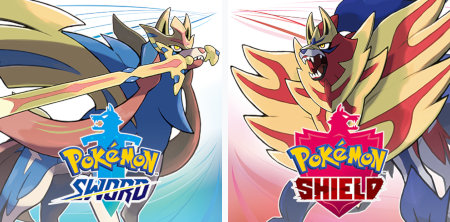
Firstly, Pokémon Sword & Shield are notably Pokémon’s first attempt at bringing the main series games to the Nintendo Switch, after the previous release of Pokémon: Let’s Go Pikachu! & Let’s Go Eevee! These games were more-or-less test runs for Pokémon for the new Nintendo Switch console, and the new generation in general. Being remakes of Pokémon Yellow, and toning down much of the core aspects of Pokémon, many fans felt them a cash-grabbing reboot, as opposed to the simplified gameplay aesthetic that they were intended for (twin TCG decks Lets Play Pikachu and Lets Play Eevee were released based on these games too).
This isn’t to deny those fans, as there were many justifiable claims made, but overall, the innovative steps that those games took on the Nintendo Switch, are what Pokémon Sword & Shield expertly capitalize upon, and use to forge a beautiful new path. A spanking brand-new region; over 86 new Pokémon (with some leaks speculating as many as 94), making the total amount of Pokémon in the series topple over 1000; stunning graphics and reworked designs; an in-depth story with its highs, lows, and breathtaking moments; and finally, a new game, leaning heavily on the established mechanics of the previous generations, but expertly introducing some awesome features that you never knew you needed (did someone ask for bikes that you can ride on water? Guess what? You got them).
The Galar Region
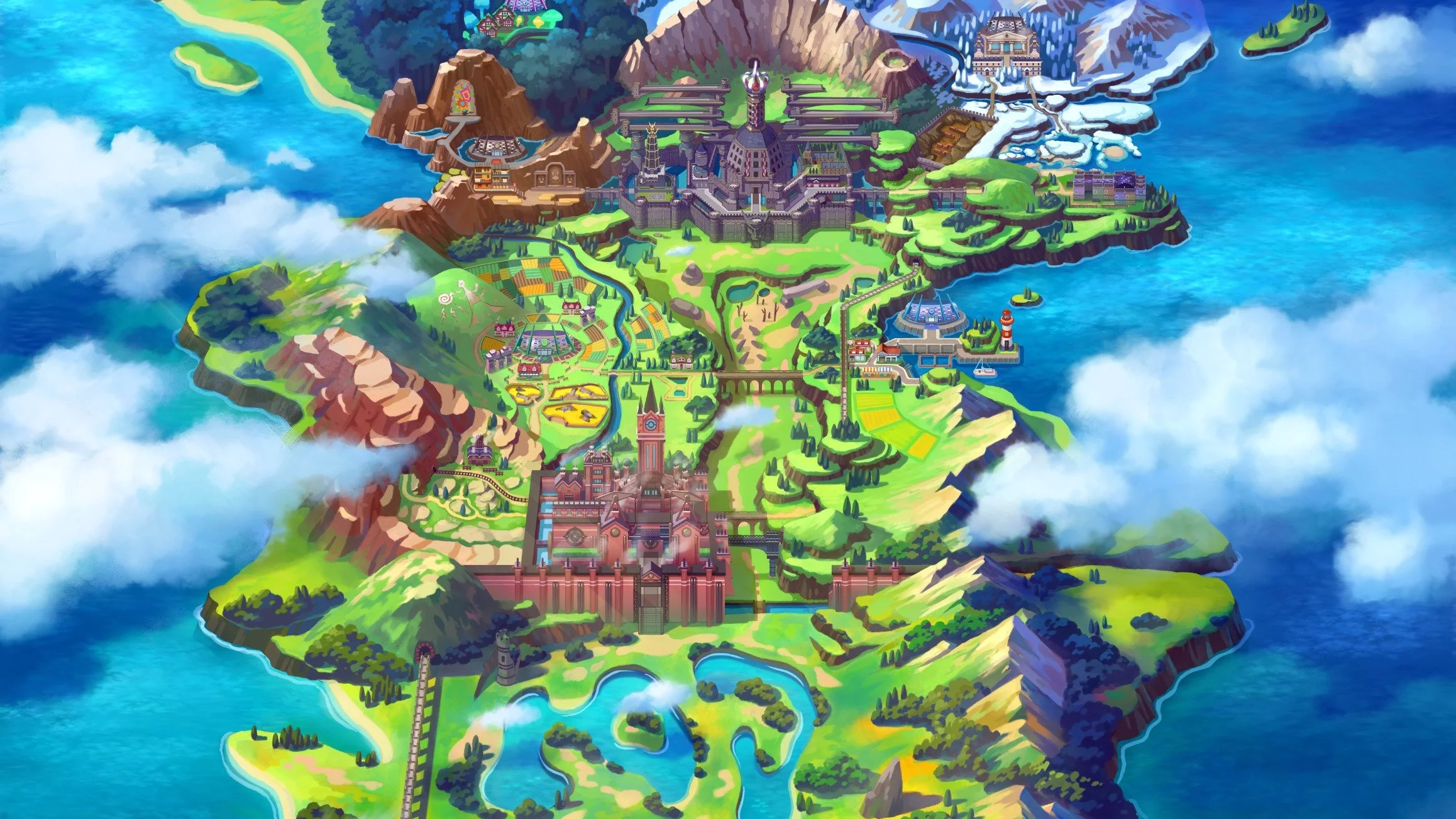
Undoubtedly one of the first things on any person who is interested in Pokémon Sword & Shield’s mind, is the completely new region that it introduces – the Galar region. A stunning new region, Pokémon once again takes an international approach to its game design, and decidedly based Galar off of the United Kingdom. With a particular emphasis on England and Wales, Galar’s terrain is very UK-esque, but also featuring areas based upon Scotland, and even the Isle of Man (aptly titled the Isle of Armor).
This feature is abundantly clear upon looking at not only concept designs, but the in-game map of the Galar region, which is, as many have noted, essentially an upside-down rendition of the United Kingdom. As a result, geographically, the style of the Galar region has vast areas of countryside, but blends them in with ideal and scenic cities, not are not as vast as the New York feel that the Unova region gives, but still sprawling with contemporary energy and style. On top of that, mountainous terrain, snow-covered areas and rivers cascade through the heart of the region, blending the history of the United Kingdom with the technical aspects of gameplay and the core narrative of Sword & Shield.
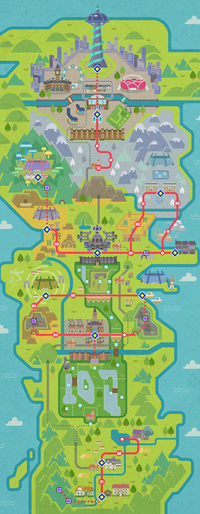
Aside from the geography, there are some obvious nods and odes to UK culture, with the Pokémon themselves taking on cute, comical, and endearing tributes to the culture. Farfetch’d, for instance, is no longer burdened by its ‘uselessness’, with it’s much more playable and new evolution, SirFetch’d; Galar’s much more regal and sir-like take on Farfetch’d. Or, Weezing, for instance, which is now an Industrial Revolution/Sherlock Holmes type character, donning a hilariously oversized top hat, and of course, a fluffy moustache of smoggy smoke to tip off the redesign. Oh, and for those that know about the many internationally important subcultures that originated from the United Kingdom, you’ll be surprised by how many instances Pokémon has managed to squeeze them into these games. Punk, for instance, proves its timelessness with some kid-friendly nods towards it in Spikemuth city.
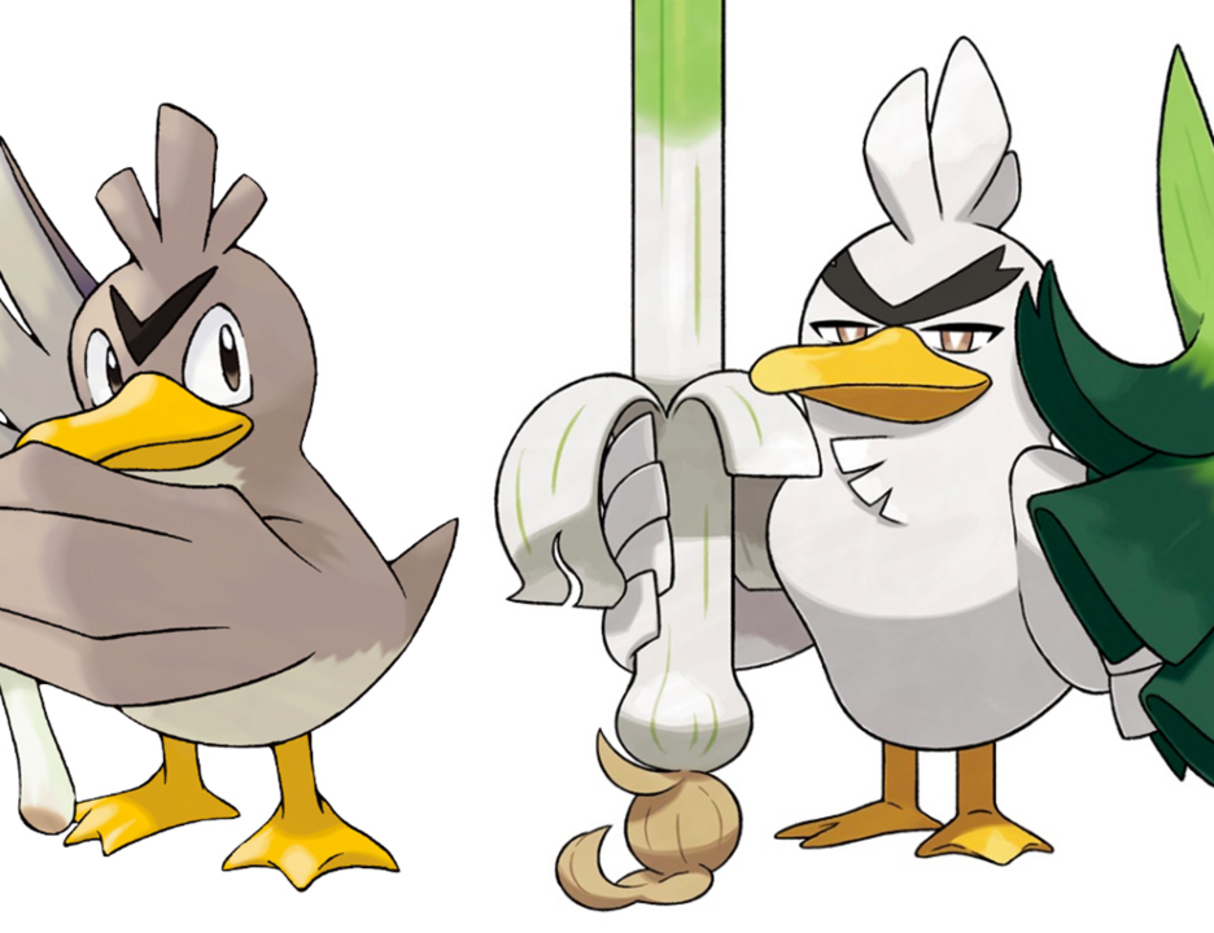
Cities and towns:
- Postwick: A farming town since days of old, where people and their Pokémon live in close harmony.
- - Wedgehurst: Our quiet borough is home to the esteemed Pokémon Research Lab.
- Motostoke: An industrial city studded with steam-powered marvels of modern engineering.
- - Turffield: A town nestled within the nurturing bowl of our many terraced farming fields.
- - Hulbury : A bustling seaport that many visit to see its lively market stalls and famed restaurant.
- - Hammerlocke: A city of great history, living and thriving within castle walls that date back to the middle ages.
- - Stow-on-Side: A vibrant town that has grown up around an ancient mural tucked away in the mountains.
- - Ballonlea: A charming town where the people make their homes among the trunks of the towering trees.
- - Circhester: Buildings from an age long gone still stand about the steaming hot spring that covers the town.
- - Spikemuth: This rocking town has a punk vibe and streets crammed with shops lined up cheek by jowl.
- - Wyndon: This booming metropolis was designed and developed by our very own Chairman Rose.
You’ll likely notice the very British-English sounding names, such as ‘Circhester’, which has the clear ‘chester’ suffix that many English cities have, such as the famous, Manchester. It’s through little details like this that the designers of Pokémon Sword & Shield demonstrate their well-planned research skills.
Other locations:
- - Wild Area
- - Meetup Spot
- - Rolling Fields
- - Dappled Grove
- - Watchtower Ruins
- - East Lake Axewell
- - West Lake Axewell
- - Axew's Eye
- - South Lake Miloch
- - Giant's Seat
- - North Lake Miloch
- - Motostoke Riverbank
- - Bridge Field
- - Stony Wilderness
- - Dusty Bowl
- - Giant's Mirror
- - Hammerlocke Hills
- - Giant's Cap
- - Lake of Outrage
- - Slumbering Weald
- - Galar Mine
- - Galar Mine No. 2
- - Motostoke Outskirts
- - Glimwood Tangle
- - Route 9 Tunnel
- - Rose Tower/Battle Tower
- - Energy Plant
- - Isle of Armor
- - Crown Tundra
Finally, for some extra and fun trivia about the region:
- - Galar is the only core series region:
- o To not have an "o" in its English name
- o To not have a Victory Road.
- o To not have an Elite Four.
- o (Instead these roles are replaced by the Champion Cup.)
- o To contain no settlements that end in "Town" or "City" in their English names.
- - Galar is the first region to have a Dark-type Gym.
- - Galar has the fewest numbered routes of any core series region, only featuring ten.
- - The adjectival form of Galar is ‘Galarian’.
The Pokémon
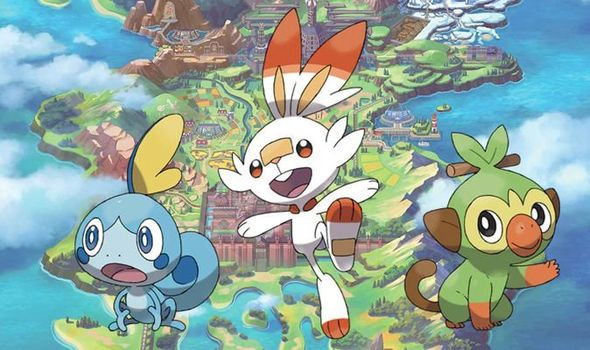
As a new introduction to Pokémon’s core series of games, and in featuring a new region, it was only natural for the franchise to bring a host of unseen Pokémon into the game. 86 confirmed new additions, and 94 speculated, may seem like a small number when compared to the onslaught of new Pokémon that some previous generations brought, but we definitely beg to differ.
As mentioned previously, the Galar region features some UK-esque Pokemon, which are essentially the Galar regions answer to the Aloha regions Alohan form Pokémon. These new Galarian form Pokémon are stunning, and if you’re an established fan of the series, you’ll find them a nice addition to the Pokémon world that you already know and love. So, before we jump into all the exclusive new Pokémon that the Galar region has to offer, let’s dive into the Galarian form Pokémon, to see how the franchise has spruced up its pre-existing material.
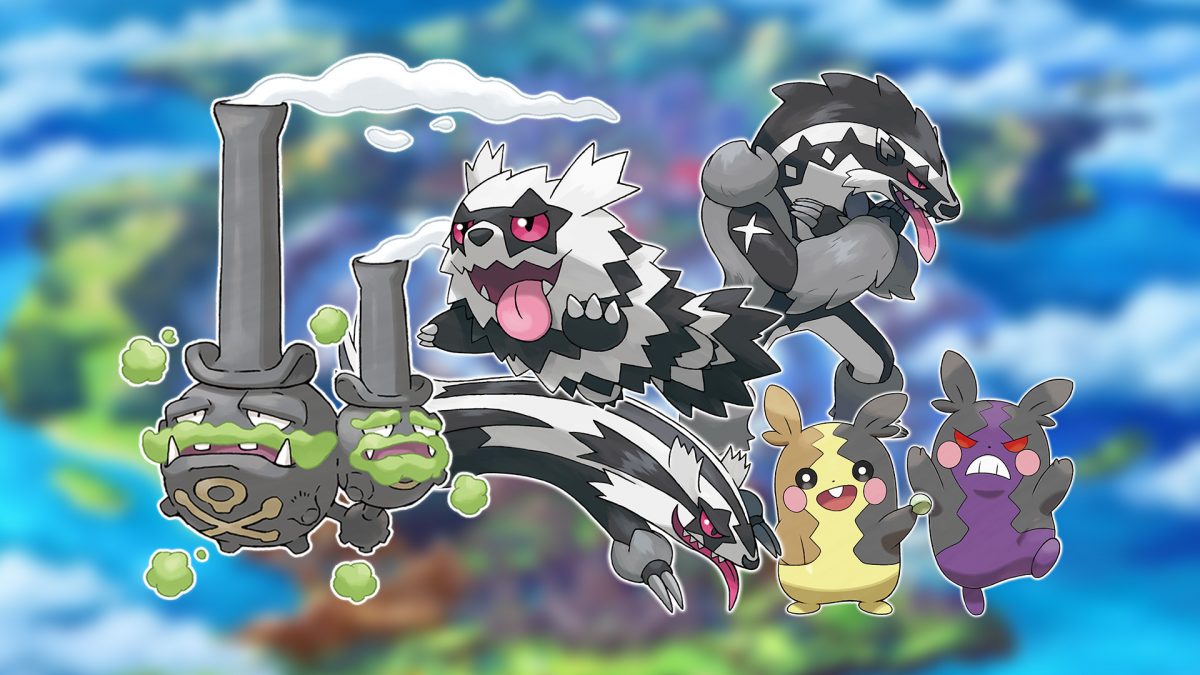
List of Pokémon with a Galarian form:
- - Meowth
- - Ponyta
- - Rapidash
- - Slowpoke
- - Farfetch'd
- - Weezing
- - Mr. Mime
- - Corsola
- - Zigzagoon
- - Linoone
- - Darumaka
- - Darmanitan
- - Darmanitan (second Galarian form)
- - Yamask
- - Stunfisk
But that’s certainly not all when it comes to the new Galarian forms! Pokémon has also added some cool new, never before seen evolutions to match them!
List of new Galarian form evolutions:
- - Obstagoon (evolves from Linoone
- - Perrserker (evolves from Meowth)
- - Cursola (evolves from Corsola)
- - Sirfetch'd (evolves from Farfetch’
- - Mr. Rime (evolves from Mr. Mime)
- - Runerigus (evolves from Yamask)
Now, while these new Galarian Pokémon are awesome and all, you are probably wondering what does the entire picture look like – what is the Galar region Pokédex? Well, in Sword and Shield, you’ll have the ability to catch an entire 400 Pokémon in the listed Pokédex, which is a huge number if you ask us! You’ll see many returning faces, whether beloved (Ralts, Togepi etc.), or a pesky reminder of wild encounters you’d rather not have had (Metapod, Swoobat etc.). So here’s a list of all the Pokémon you’ll find in Sword & Shield along your adventure:
The Galar region Pokédex:
- - #001 Grookey
- - #002 Thwackey
- - #003 Rillaboom
- - #004 Scorbunny
- - #005 Raboot
- - #006 Cinderace
- - #007 Sobble
- - #008 Drizzile
- - #009 Inteleon
- - #010 Blipbug
- - #011 Dottler
- - #012 Orbeetle
- - #013 Caterpie
- - #014 Metapod
- - #015 Butterfree
- - #016 Grubbin
- - #017 Charjabug
- - #018 Vikavolt
- - #019 Hoothoot
- - #020 Noctowl
- - #021 Rookidee
- - #022 Corvisquire
- - #023 Corviknight
- - #024 Skwovet
- - #025 Greedent
- - #026 Pidove
- - #027 Tranquill
- - #028 Unfezant
- - #029 Nickit
- - #030 Thievul
- - #031 Zigzagoon
- - #032 Linoone
- - #033 Obstagoon
- - #034 Wooloo
- - #035 Dubwool
- - #036 Lotad
- - #037 Lombre
- - #038 Ludicolo
- - #039 Seedot
- - #040 Nuzleaf
- - #041 Shiftry
- - #042 Chewtle
- - #043 Drednaw
- - #044 Purrloin
- - #045 Liepard
- - #046 Yamper
- - #047 Boltund
- - #048 Bunnelby
- - #049 Diggersby
- - #050 Minccino
- - #051 Cinccino
- - #052 Bounsweet
- - #053 Steenee
- - #054 Tsareena
- - #055 Oddish
- - #056 Gloom
- - #057 Vileplume
- - #058 Bellossom
- - #059 Budew
- - #060 Roselia
- - #061 Roserade
- - #062 Wingull
- - #063 Pelipper
- - #064 Joltik
- - #065 Galvantula
- - #066 Electrike
- - #067 Manectric
- - #068 Vulpix
- - #069 Ninetales
- - #070 Growlithe
- - #071 Arcanine
- - #072 Vanillite
- - #073 Vanillish
- - #074 Vanilluxe
- - #075 Swinub
- - #076 Piloswine
- - #077 Mamoswine
- - #078 Delibird
- - #079 Snorunt
- - #080 Glalie
- - #081 Froslass
- - #082 Baltoy
- - #083 Claydol
- - #084 Mudbray
- - #085 Mudsdale
- - #086 Dwebble
- - #087 Crustle
- - #088 Golett
- - #089 Golurk
- - #090 Munna
- - #091 Musharna
- - #092 Natu
- - #093 Xatu
- - #094 Stufful
- - #095 Bewear
- - #096 Snover
- - #097 Abomasnow
- - #098 Krabby
- - #099 Kingler
- - #100 Wooper
- - #101 Quagsire
- - #102 Corphish
- - #103 Crawdaunt
- - #104 Nincada
- - #105 Ninjask
- - #106 Shedinja
- - #107 Tyrogue
- - #108 Hitmonlee
- - #109 Hitmonchan
- - #110 Hitmontop
- - #111 Pancham
- - #112 Pangoro
- - #113 Klink
- - #114 Klang
- - #115 Klinklang
- - #116 Combee
- - #117 Vespiquen
- - #118 Bronzor
- - #119 Bronzong
- - #120 Ralts
- - #121 Kirlia
- - #122 Gardevoir
- - #123 Gallade
- - #124 Drifloon
- - #125 Drifblim
- - #126 Gossifleur
- - #127 Eldegoss
- - #128 Cherubi
- - #129 Cherrim
- - #130 Stunky
- - #131 Skuntank
- - #132 Tympole
- - #133 Palpitoad
- - #134 Seismitoad
- - #135 Duskull
- - #136 Dusclops
- - #137 Dusknoir
- - #138 Machop
- - #139 Machoke
- - #140 Machamp
- - #141 Gastly
- - #142 Haunter
- - #143 Gengar
- - #144 Magikarp
- - #145 Gyarados
- - #146 Goldeen
- - #147 Seaking
- - #148 Remoraid
- - #149 Octillery
- - #150 Shellder
- - #151 Cloyster
- - #152 Feebas
- - #153 Milotic
- - #154 Basculin
- - #155 Wishiwashi
- - #156 Pyukumuku
- - #157 Trubbish
- - #158 Garbodor
- - #159 Sizzlipede
- - #160 Centiskorch
- - #161 Rolycoly
- - #162 Carkol
- - #163 Coalossal
- - #164 Diglett
- - #165 Dugtrio
- - #166 Drilbur
- - #167 Excadrill
- - #168 Roggenrola
- - #169 Boldore
- - #170 Gigalith
- - #171 Timburr
- - #172 Gurdurr
- - #173 Conkeldurr
- - #174 Woobat
- - #175 Swoobat
- - #176 Noibat
- - #177 Noivern
- - #178 Onix
- - #179 Steelix
- - #180 Arrokuda
- - #181 Barraskewda
- - #182 Meowth
- - #183 Perrserker
- - #184 Persian
- - #185 Milcery
- - #186 Alcremie
- - #187 Cutiefly
- - #188 Ribombee
- - #189 Ferroseed
- - #190 Ferrothorn
- - #191 Pumpkaboo
- - #192 Gourgeist
- - #193 Pichu
- - #194 Pikachu
- - #195 Raichu
- - #196 Eevee
- - #197 Vaporeon
- - #198 Jolteon
- - #199 Flareon
- - #200 Espeon
- - #201 Umbreon
- - #202 Leafeon
- - #203 Glaceon
- - #204 Sylveon
- - #205 Applin
- - #206 Flapple
- - #207 Appletun
- - #208 Espurr
- - #209 Meowstic
- - #210 Swirlix
- - #211 Slurpuff
- - #212 Spritzee
- - #213 Aromatisse
- - #214 Dewpider
- - #215 Araquanid
- - #216 Wynaut
- - #217 Wobbuffet
- - #218 Farfetch'd
- - #219 Sirfetch'd
- - #220 Chinchou
- - #221 Lanturn
- - #222 Croagunk
- - #223 Toxicroak
- - #224 Scraggy
- - #225 Scrafty
- - #226 Stunfisk
- - #227 Shuckle
- - #228 Barboach
- - #229 Whiscash
- - #230 Shellos
- - #231 Gastrodon
- - #232 Wimpod
- - #233 Golisopod
- - #234 Binacle
- - #235 Barbaracle
- - #236 Corsola
- - #237 Cursola
- - #238 Impidimp
- - #239 Morgrem
- - #240 Grimmsnarl
- - #241 Hatenna
- - #242 Hattrem
- - #243 Hatterene
- - #244 Salandit
- - #245 Salazzle
- - #246 Pawniard
- - #247 Bisharp
- - #248 Throh
- - #249 Sawk
- - #250 Koffing
- - #251 Weezing
- - #252 Bonsly
- - #253 Sudowoodo
- - #254 Cleffa
- - #255 Clefairy
- - #256 Clefable
- - #257 Togepi
- - #258 Togetic
- - #259 Togekiss
- - #260 Munchlax
- - #261 Snorlax
- - #262 Cottonee
- - #263 Whimsicott
- - #264 Rhyhorn
- - #265 Rhydon
- - #266 Rhyperior
- - #267 Gothita
- - #268 Gothorita
- - #269 Gothitelle
- - #270 Solosis
- - #271 Duosion
- - #272 Reuniclus
- - #273 Karrablast
- - #274 Escavalier
- - #275 Shelmet
- - #276 Accelgor
- - #277 Elgyem
- - #278 Beheeyem
- - #279 Cubchoo
- - #280 Beartic
- - #281 Rufflet
- - #282 Braviary
- - #283 Vullaby
- - #284 Mandibuzz
- - #285 Skorupi
- - #286 Drapion
- - #287 Litwick
- - #288 Lampent
- - #289 Chandelure
- - #290 Inkay
- - #291 Malamar
- - #292 Sneasel
- - #293 Weavile
- - #294 Sableye
- - #295 Mawile
- - #296 Maractus
- - #297 Sigilyph
- - #298 Riolu
- - #299 Lucario
- - #300 Torkoal
- - #301 Mimikyu
- - #302 Cufant
- - #303 Copperajah
- - #304 Qwilfish
- - #305 Frillish
- - #306 Jellicent
- - #307 Mareanie
- - #308 Toxapex
- - #309 Cramorant
- - #310 Toxel
- - #311 Toxtricity
- - #312 Silicobra
- - #313 Sandaconda
- - #314 Hippopotas
- - #315 Hippowdon
- - #316 Durant
- - #317 Heatmor
- - #318 Helioptile
- - #319 Heliolisk
- - #320 Hawlucha
- - #321 Trapinch
- - #322 Vibrava
- - #323 Flygon
- - #324 Axew
- - #325 Fraxure
- - #326 Haxorus
- - #327 Yamask
- - #328 Runerigus
- - #329 Cofagrigus
- - #330 Honedge
- - #331 Doublade
- - #332 Aegislash
- - #333 Ponyta
- - #334 Rapidash
- - #335 Sinistea
- - #336 Polteageist
- - #337 Indeedee
- - #338 Phantump
- - #339 Trevenant
- - #340 Morelull
- - #341 Shiinotic
- - #342 Oranguru
- - #343 Passimian
- - #344 Morpeko
- - #345 Falinks
- - #346 Drampa
- - #347 Turtonator
- - #348 Togedemaru
- - #349 Snom
- - #350 Frosmoth
- - #351 Clobbopus
- - #352 Grapploct
- - #353 Pincurchin
- - #354 Mantyke
- - #355 Mantine
- - #356 Wailmer
- - #357 Wailord
- - #358 Bergmite
- - #359 Avalugg
- - #360 Dhelmise
- - #361 Lapras
- - #362 Lunatone
- - #363 Solrock
- - #364 Mime Jr.
- - #365 Mr. Mime
- - #366 Mr. Rime
- - #367 Darumaka
- - #368 Darmanitan
- - #369 Stonjourner
- - #370 Eiscue
- - #371 Duraludon
- - #372 Rotom
- - #373 Ditto
- - #374 Dracozolt
- - #375 Arctozolt
- - #376 Dracovish
- - #377 Arctovish
- - #378 Charmander
- - #379 Charmeleon
- - #380 Charizard
- - #381 Type: Null
- - #382 Silvally
- - #383 Larvitar
- - #384 Pupitar
- - #385 Tyranitar
- - #386 Deino
- - #387 Zweilous
- - #388 Hydreigon
- - #389 Goomy
- - #390 Sliggoo
- - #391 Goodra
- - #392 Jangmo-o
- - #393 Hakamo-o
- - #394 Kommo-o
- - #395 Dreepy
- - #396 Drakloak
- - #397 Dragapult
- - #398 Zacian
- - #399 Zamazenta
- - #400 Eternatus
Aside from the Pokémon themselves, it is also important to note that Pokémon Sword & Shield have officially dropped Mega Power Pokémon in favour of Dynamax Pokémon and Gigantamax Pokémon. To explain, a Dynamax Pokémon is essentially a giant version of any Pokémon, which serves in a similar fashion to Mega Evolution in the sense that you can only use it once per battle. You Pokémon becomes huge, and therefore, hugely more powerful. It seems somewhat gimmicky at first, but it’s more than that, and the official creators of Pokémon have said themselves that you will need to master this aspect of the game to be able to master Pokémon in the new generation.
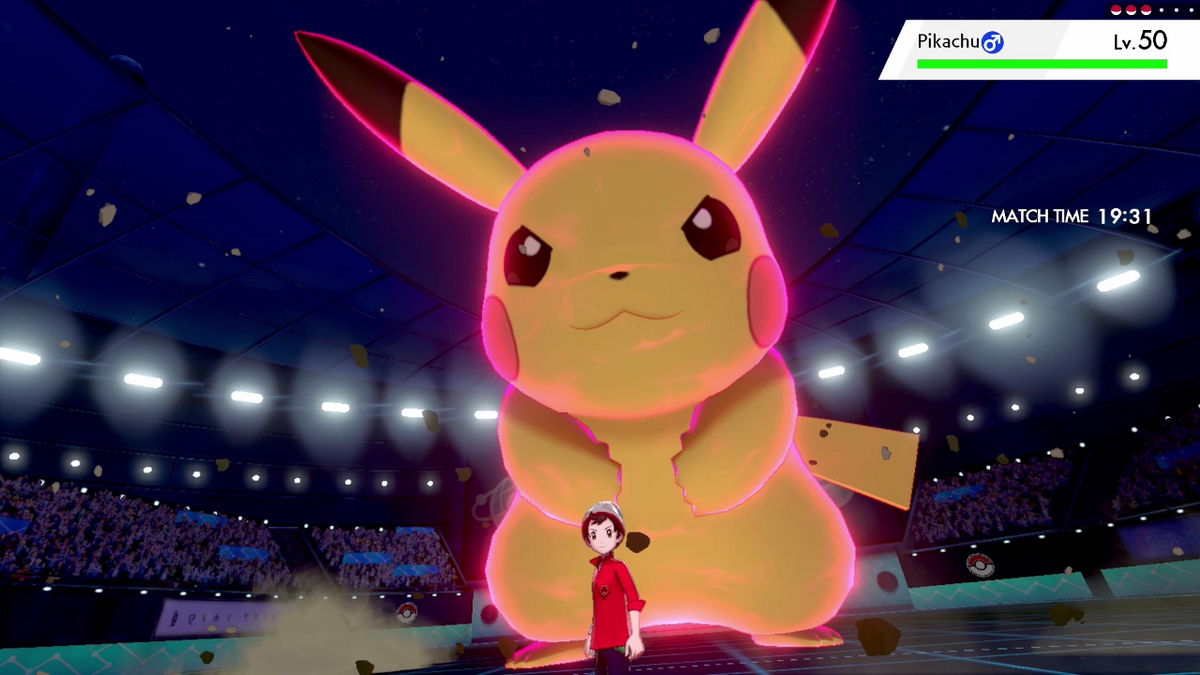
Similarly, a Gigantamax Pokémon is an even bigger Dynamax Pokémon, and therefore, even more powerful, but at the same time, it thereby has more restrictions. Unlike Dynamaxing (the process of a Pokémon entering its Dynamax form), Gigantamaxing cannot be done with every single Pokémon in the game. Instead, Gigantamaxing is a little more complex, as not only does the Pokémon in question become bigger, but its appearance can drastically change as well. What’s more, they gain an incredibly powerful G-Max move, which is a sure-fire way to terrify your opponent with the pure amount of power that you have in your arsenal.
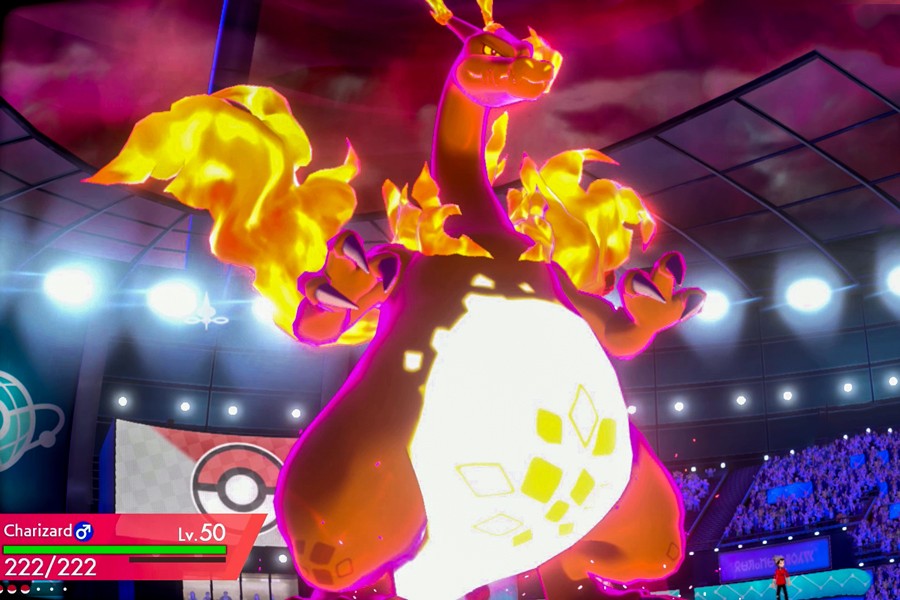
Visually, Gigantamax Pokémon are very cool, with Charizard, a well-known fan favourite, yet again receiving attention with an awe-inspiring new form that will make you want to keep Ash’s disobedient friend on your team.
Lastly, we need to talk about the namesake Pokémon of Sword & Shield – the legendary mascots of the titles. Zacian is the mascot legendary for Pokémon Sword, evidenced by the sword it holds in its mouth, whereas Zamazenta is the mascot legendary for Pokémon Shield, its chest made into a shield-styled breastplate. As legendary Pokémon, they feature prominently in the story arc, which we wont spoil for you, but only hint that it’s a good one with some other hidden legendary Pokémon tagging alongside!
The Gameplay
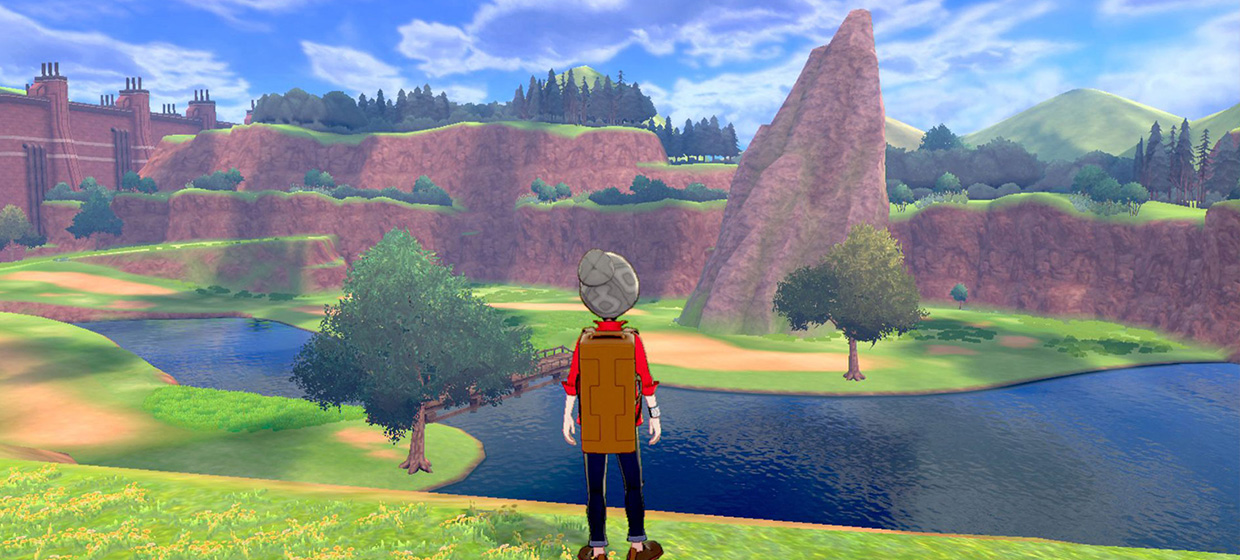
Now, if you are familiar with the gameplay of previous Pokémon games, you’ll be almost entirely familiar with the gameplay of Pokémon Sword & Shield right off the bat. That being said, there are some key differences, and unique additions, some of which we have already talked about, but other to which we’ll explain:
- - Autosaving: Pokémon Sword & Shield features autosaving, which has notably either scared fans with its implications, or made them feel safer. The truth is, it is nothing but a positive addition. The reason? It’s not compulsory. It’s a great addition if you are a casual player, since you no longer need to feel like you are constantly awaiting a point to save the game, which can particularly be the case if you are struggling through a difficult area, or unsure if there is going to be a long cutscene, and you have other business to attend to. On the flipside, some people may feel pressured by autosaving, and like they cannot retrace their steps, which thankfully isn’t the case, as Pokémon has clearly given an option to turn off autosaving, giving players the freedom to save as they please.
- - Wild encounters: one of the biggest letdowns for many players regarding Pokémon: Let’s Go Pikachu! & Let’s Go Eevee! was the lack of wild encounters. As a core aspect of almost all the games, and every game in the main series, it made Pokémon feel distant and foreign from what it once was. Having done experimenting, Pokémon has re-introduced wild encounters in stunning fashion. Now, not only are wild encounters back, but in the new ‘Wild Area’, your wild encounters will differ due to factors such as in-game weather, time and location – and you can even whistle to attract flying Pokémon from the sky! This is definitely a bonus for the new game, and a fantastic way to make the well-known wild encounter system feel fresh and exciting.
- - No HMs: another core aspect of many previous Pokémon games were the HMs (Hidden Moves), such as Cut, Surf and Fly. These were the moves that your Pokémon could usually only learn through being taught, and were needed to progress into later stages of the game, or access hidden areas. Cut, which is likely the most famous, was there to allow the players to cut down trees as to access areas once they have completed a certain part of the game. But, Pokémon Sword & Shield do not opt to feature this game mechanic, which as the developers have explained, is simply because they did not feel that it fitted naturally into the game.
- - Automatic experience share: this is probably the most controversial new feature of Pokémon Sword & Shield. What is a relatively minor factor to some, is game changing to others, and that comes in the absence of the well known and loved item ‘Exp Share’. Previously equipped to Pokémon, Exp Share allowed you share experience points gained from battle more freely. Simply put, Sword & Shield replaces this feature with automatic experience point distribution among all members of your team. So, no matter the scenario, all the Pokémon in your party will gain experience points from any battle, no matter whether they were sent it or not. Since the game is very new, it is still to early to determine whether this is actually a positive or negative addition, but time will tell, and we will all see soon enough.
- - Customizable characters: Pokémon Sword & Shield once again feature customizable characters. Upon beginning the game, you will have the choice between four male and four female characters, which you are freely able to customize – and very extensively – throughout the game. This is one of the most beloved features in Pokémon since its introduction in the X & Y series, and it is great to see it back once again.
- - Poké Jobs: A fun optional addition to the games, Poké Jobs can be accessed through Rotom at the Pokémon Centers. As the name suggests, they are quite literally jobs that your Pokémon complete, and they do so for universities and other institutes within the game. The benefit for you, as a trainer, is that your Pokémon can gain experience and cool items in return for their work. However, your Pokémon will be sent away for their work for a while, and different Pokémon are suited to different jobs, so you’ll need to plan which ones you’ll want to send off to work.
- - Poké Camp: ever wanted to take your Pokémon camping? Well, surprisingly, now you can! Pokémon has introduced a new feature where you can go to Poké Camp. It’s essentially a bonding experience for you and your Pokémon, whereby you can interact with them and cook curry for them (up to 100 different types, in fact!). These curries accumulate in your ‘Curry Dex’, which is kind of like a Pokédex for curry recipes, of which have varying implications for your Pokémon, such as altered battle stats, or healing properties.
So, in beginning your new Pokémon journey, expect to see a refreshed rendition of the previous games at its core, but be aware of the above key changes, as they will certainly come in handy.
The Lore
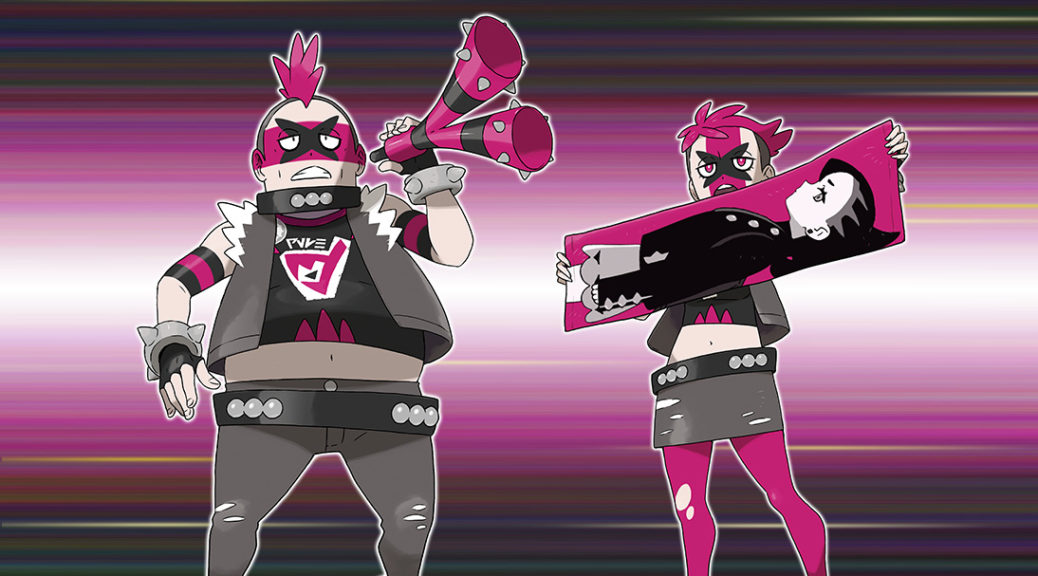
Now, don’t get us wrong! We won’t spoil the story! Of course, we will give away some details, but not everything, so here’s the briefest of glimpses into the lore of Pokémon Sword & Shield:
Like most Pokémon games, this is a story of you, a trainer, who is battling to become the best Pokémon trainer, while at the same time, complex the Pokédex. The catch? Dark forces loom about, and untold events shroud the Galar region’s past with the present acting as a disguise for what and will happen. Throughout your journey, mysteries will be unravelled, and smaller narratives will paint themselves into the picture as well, such as the infamous Team Yell; a punk-esque clique with not world-ending plots (like that of Team Galactic or Plasma), but a strange obsession with a rival trainer named Marnie. Find yourself, find the mysteries, construct the side plots, and discover the Galar region!
Pokémon’s Final Steps in the Transition From 2D to 3D – What It means
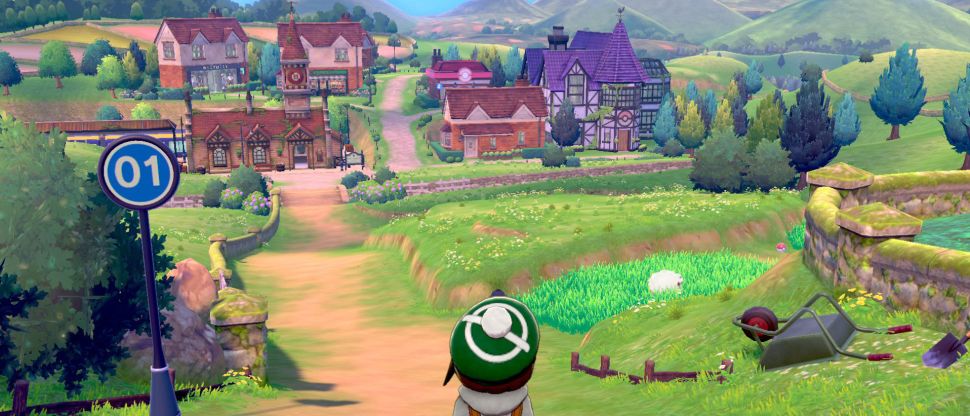
Another point to mention, that doesn’t necessary refer to Pokémon Sword & Shield, but Pokémon in general, is the change from two-dimensional gameplay to three-dimensional:
Whether you felt it or not, the transitional period that Pokémon faced between changing from its two-dimensional origins – and similar, partially two-dimensional upbringings – to the three-dimensional world, caused a great divide. Those accustomed to the series, debated the change with either support towards the first steps into the three-dimensional territory for the main series games, or on the flip-side, felt distant and unable to connect to the new generations’ style. The change was great enough to be the deciding factor towards whether some fans would return for future Pokémon generations, and it’s understandable why that happened. Some may feel it a little abrasive of fans to deny the potential greatness of a product based on a graphical change, but it was much more than that. Yes, Pokémon was no stranger to the three-dimensional platform, having made games in the style since the late 90s, among which the Pokémon Stadium games remain clear-cut classics. But, its introduction into the main series undoubtedly felt strange, despite being necessary for the games, and Pokémon in general to progress.
So, what caused this, and why is it relevant? Well, it can be shortened into a number of factors, much of which are very necessary to explain and analyse when it comes to why Pokémon Sword & Shield really shines. The most obvious aspect is a graphical change, but beyond that, the stylistic difference had a ripple effect to the gameplay and overall presentation of Pokémon. The simple change from a bird’s eye viewpoint of your little two-dimensional character’s representation, to the feeling of following them from behind in a third-person perspective, made a big difference. Chiptune music fading away, and static images now a thing of yesteryear, many qualities that were deeply ingrained into the series felt stripped away.
But, what made the change jarring was not the difference in the graphics themselves, but rather, the design. Pokémon had been slowly moving towards being ‘cooler’ – a funny way to describe it, but an honest one – with the third generation of games, set in Hoenn, beginning to have noticeable differences in the designs of the Pokémon from the previous two generations, and to which was only furthered in the fifth generation – the pinnacle of Pokémon’s ‘cool’ design aesthetic. It’s undeniable that the third generation’s Rayquaza, for example, looks different to that of the previous generations’ legendary Pokémon in design. Following this, the fifth generation, not just legendary Pokémon, looked ‘cooler’ overall, and the series itself was also more mature in many senses. Ken Sugimori, the art director for the Pokémon franchise notably went on record saying this about generation three and four while talking about Pokémon Black & White (which was newly released at the time): ‘In Pokémon Diamond & Pearl and Pokémon Ruby & Sapphire, we made the protagonists energetic and hot blooded with short hair, but this time we were aiming for something cooler’. Going on to explain in further detail throughout the interview, the progression of the series away from its ‘cute’ core roots is obvious, from older protagonists, morally conflicted villains, and a complex underlying narrative. Whether intentional or not, Pokémon’s progression almost mirrored that of it’s core audience, in the sense that it seemed to mature from game-to-game, becoming not just ‘cooler’, but more versatile, and able to be targeted at an older demographic.
So, what did all this mean for the introduction of the three-dimensional? Simply put; a step back from the matured ‘cool’ factor of Pokémon, and a step into a newer, simpler generation. Pokémon had to rethink itself because the established trends in the series were no longer valid, and a new creative input was needed. This is not to say that Pokémon X and Y didn’t have features that were ‘cool’ – Mega Charizard, for instance, being one of the coolest additions to the franchise – but the transition from two-dimensional games to three-dimensional quite clearly marked a different feel to the design as well, furthered by Omega Ruby & Alpha Sapphire, and the Sun & Moon games. Some say it may have just been time for some older fans to admit they had outgrown Pokémon, but in writing this, a defence or opposition for older fans is not meant to have been given. Nor that of the technical limitations that the Nintendo 3DS had in producing these additions to the franchise. Instead, merely an explanation of why the change from two-dimensional to three-dimensional was a process that had its hurdles. But, then why is are these hurdles relevant?
Because, now, from the introduction of the Nintendo Switch, the awkwardness of the transitional period is over. Pokémon has jumped the hurdles put into place by three-dimensional gameplay. In fact, it has not only jumped those hurdles, but leaped over them. Pokémon Sword & Shield have officially filled the shoes that the two-dimensional games of the now bygone Nintendo DS era left. It’s a fresh start, and one that will have those who felt distanced by the transition coming back for more, and those new to the series staying for longer.
A completely new feel, Pokémon on the Nintendo Switch is gorgeous, and Sword & Shield stand none other than at the pinnacle of this. Now, there is no feeling of war between the cuteness and coolness of the series, with Sword & Shield expertly managing to balance these factors in a completely redesigned adventure. In short, the time to play Pokémon is now. It feels fresh, new, and like never before.
The Final Verdict
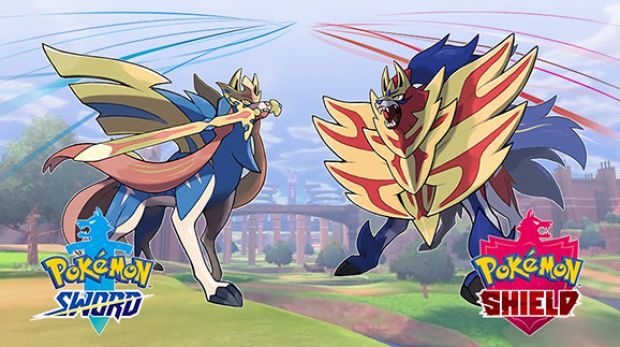
Wow, that sure was a lot to discuss! Pokémon Sword & Shield is no small entry into the series. It is a big change, and a brand-new start for an entire generation. It’s difficult to summarize it all, so we’ll cheat a little and say that it’s just something you need to play, or at the very least, watch someone else play. Pokémon Sword & Shield are great games, but saying that does them no justice, as almost every Pokémon game could be considered great. What makes them different is their transitional strength on the new Nintendo Switch platform, their revised take on the previous games, and their taking of the series into completely new directions. Whatever you may think, Pokémon Sword & Shield are the games to make you rethink it. Fans, try something new. People who aren’t fans, find out that you just might not be a fan… yet.


